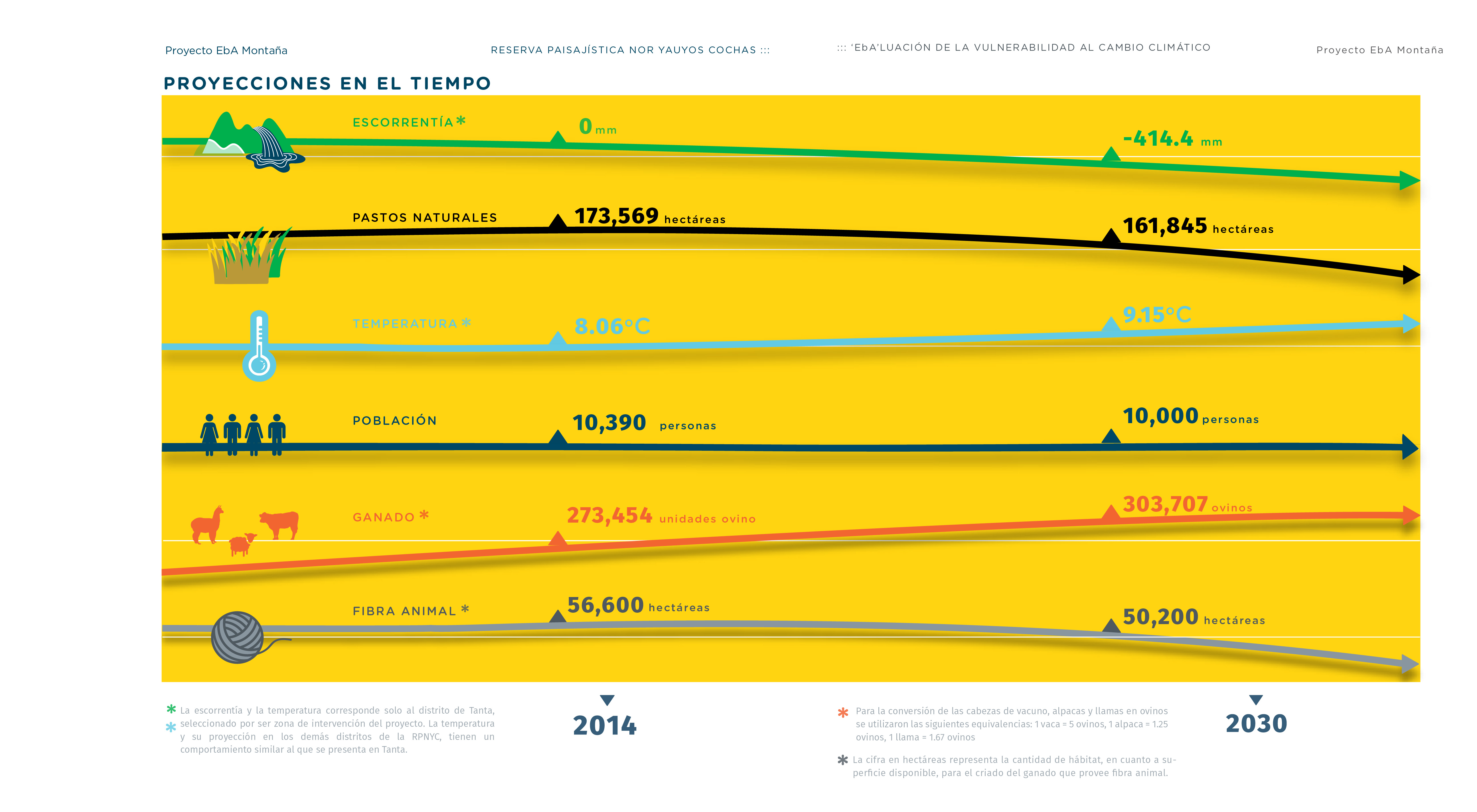

This building block is an essential part of the EbA approach and was carried out prior to the implementation of EbA measures in the Nor Yauyos-Cochas Landscape Reserve. It was considered important to understand the vulnerability to climate change of ecosystems and of populations living in the reserve and whose livelihoods depend directly on the reserve´s ecosystem services.
The objective was to determine the level of sensitivity and the ability to cope with the adverse effects of climate change and extreme events using present observations and future scenarios. Based on the results of these vulnerability and impact studies, the districts with higher vulnerability of ecosystems and ecosystem services -if current management practices would be continued – were identified.
This information served not only to select pilot areas but also to confirm that previously identified EbA measures were adequate to increase resilience of ecosystems to climate change.
- Availability and access to necessary information, both scientific (climatic, hydrological, etc.) and field information.
- Time: the study required time for data collection and analysis.
- Coordinated work of the actors: SERNANP and Communities
- Knowing and understanding how vulnerable ecosystems and populations are to climate change is absolutely necessary in order to identify the most appropriate measures to reduce this vulnerability in the future.
- There is no single way to measure vulnerability. The main lesson is that not only a scientific study is required, but a complete and agile and participatory process that generates the quantitative and qualitative information that is needed.
- If the study is very expensive or very complex, it is not replicable. It is necessary to evaluate in advance to what extent the study should be carried out.